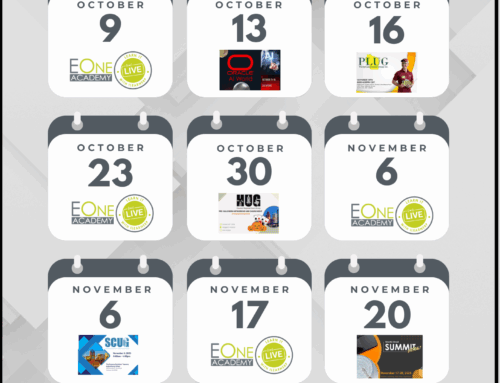 “Sticky” training builds skills and attitudes that are sustained through long-term retention and application. There are numerous models and methods that have been set forth that claim to help make training “stick” long after training programs wrap up, so in this blog we’re going to highlight some of the best tips and tricks we’ve found in our years of training to help ensure that training reaches employees where they are, when they need it and beyond their initial moment of need.
“Sticky” training builds skills and attitudes that are sustained through long-term retention and application. There are numerous models and methods that have been set forth that claim to help make training “stick” long after training programs wrap up, so in this blog we’re going to highlight some of the best tips and tricks we’ve found in our years of training to help ensure that training reaches employees where they are, when they need it and beyond their initial moment of need.
1. The most effective employee training never really ends. Creating a learning culture will help to foster and extend learning in your organization beyond specific training initiatives.
When organizations communicate the need for education and training and support these efforts with tangible resources, programs and assistance, employees are more likely to expand their knowledge base and be more motivated to grow and improve professionally. The continued adoption of new technologies in companies today means that employees now more than ever must learn to grow and adapt their skill-sets. When organizations clearly communicate their goals and align them with learning opportunities, employees will be more likely to take advantage of these opportunities to get and stay ahead of the curve. Making sure that ongoing learning and resources are available via a learning platform, like an Learning Management System, can also be a great asset, and will help to provide measurements and metrics for your organization’s efforts.
2. Make training that permeates the senses through mental challenge, physical interaction, and emotional engagement.
Having a clear sense of what you would like trainees to know and do is essential, but getting them to listen and engage is a whole other ballgame. Asking how your employees feel (or might feel) given a set of variables, and planning for how you want them to feel during and after training can help you figure out how to tackle obstacles that can get in the way of learning such as anger, fear or frustration. Start by meeting your trainees however they show up and engaging their right brains with things like humor, images and chances to apply their learning to help move them towards more positive emotions, such as confidence, optimism or joy.
3. Plan reinforcements for the new skills, follow-ups and ongoing training support.
Beyond the show and tell of training, employees should have the opportunity to do and apply their learning. If employees don’t get the chance to practice what they have learned shortly after they have learned it, chances are the content will fade out of memory in a rather short amount of time. Providing practice opportunities can help minimize lack of retention of training. Making training resources available after training for trainees to return to also helps to reinforce learning and minimize any fear that employees experience once they attend training and get into those real-life scenarios where they have to apply what they have learned. It’s also not a bad idea to follow up with trainees to make sure that they have everything they need post-training to apply and practice their learning and circle back if needed with more resources or further training opportunities.
To learn more about how we can assist with the full life-cycle of your next training project for a “sticky” training experience for your organization, contact us here.




